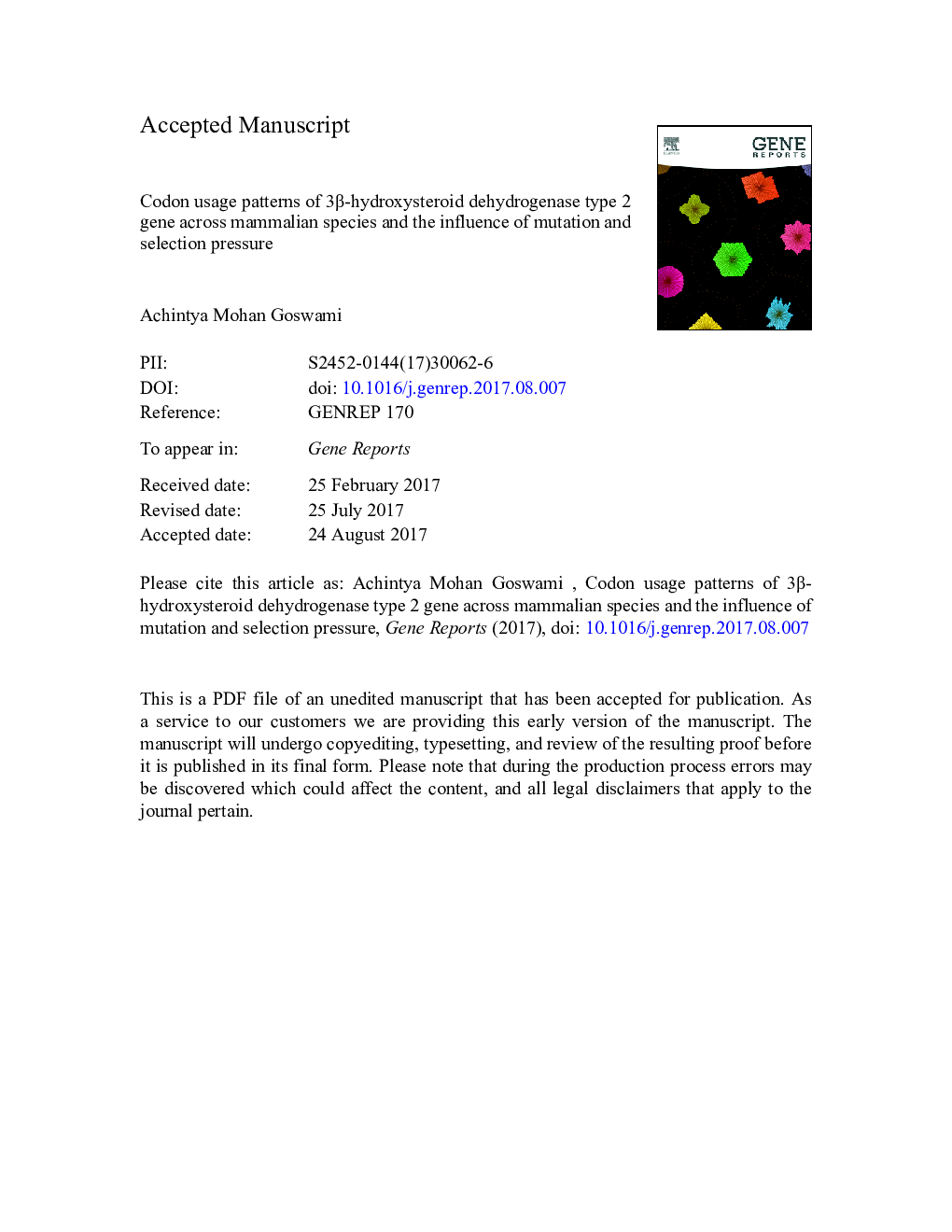| Article ID | Journal | Published Year | Pages | File Type |
|---|---|---|---|---|
| 5589957 | Gene Reports | 2017 | 46 Pages |
Abstract
3β-Hydroxysteroid dehydrogenase (3β-HSD)/Î5-4-isomerase type 2 (3β-HSD2) is an important enzyme in the steroid biosynthesis pathway and is involved in oxidation and isomerization of the Î5-steroids to form the respective Î4-ketosteroids. The enzyme 3β-HSD2 is expressed in adrenal cortex where it participates in the synthesis of cortisol and aldosterone in mammals. The study of codon usage patterns reveals the forces that influence evolution and provides insights to understand the process of evolution at the molecular level. In the present study, comparative bioinformatics analyses of synonymous codon usage bias and compositional dynamics of codon usage patterns in HSD3B2 genes across ten different mammalian species were carried out to obtain insight into the roles of nucleotide compositional constraints, mutational pressure and natural selection in shaping the codon usage patterns of HSD3B2. The results showed that the codon usage patterns in HSD3B2 genes were influenced by GC3 bias and CTG was the most over-represented codon in all the mammalian species studied. There was weak correlations between tAI and GC percentage (at three positions of codon) and between tAI and ENc in HSD3B2 genes; and all these indicated variability of gene expression and involvement of other evolutionary forces, apart from translational selection. It was also found that the pattern of codon usage in HSD3B2 genes was generally similar among closely related mammalian species, but differed significantly among distantly related organisms. Among 24 abundantly used codons with mean relative synonymous codon usage value > 1.0, twenty one codons were G/C ended and three codons were A/T ended. In mammals, both natural selection and mutation pressure were found to play important roles in shaping the codon usage pattern of HSD3B2.
Related Topics
Life Sciences
Biochemistry, Genetics and Molecular Biology
Genetics
Authors
Achintya Mohan Goswami,
